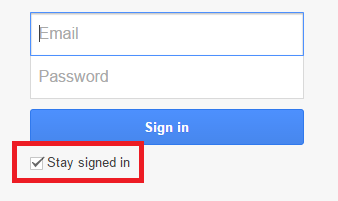Podcast: Play in new window | Download
 In the past several years, websites have been encouraging their users to remain logged in at all times, often nudging with a checkbox next to a “keep me logged in” option or making it difficult to find a way to log out. This helps these websites to track your behavior and preferences, often aiding them with targeting and tailoring advertisements they show to you. Yahoo, Google, and YouTube all do it, and so do many other platforms.
In the past several years, websites have been encouraging their users to remain logged in at all times, often nudging with a checkbox next to a “keep me logged in” option or making it difficult to find a way to log out. This helps these websites to track your behavior and preferences, often aiding them with targeting and tailoring advertisements they show to you. Yahoo, Google, and YouTube all do it, and so do many other platforms.
Well, isn’t it convenient that they often mark those checkbox options by default? …Convenient for them, you can bet! These companies are nudging user behavior in the direction of becoming used to always being logged in to sites. This is generally unhealthy, as users should be able to “unplug” when they are not using a website, and the customization of user experiences – while potentially better at providing targeted advertisements or content – prevents the possibility of a shared objective user experience.
This customization has been in vogue for the past several years, and perhaps it will subside to a large degree because over-customization and “native advertisement” and excessive spin are starting to be criticized more and more…
It should be noted that those of us who are serious about online content and content marketing often must manage several different accounts on the same platforms, so these “always logged in” default options are totally useless and get in the way. They make it take longer to log in every time, as you have to reach for your mouse to uncheck the checkbox. Don’t you miss Web 1.0?



